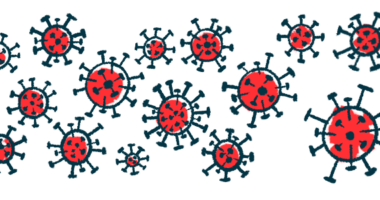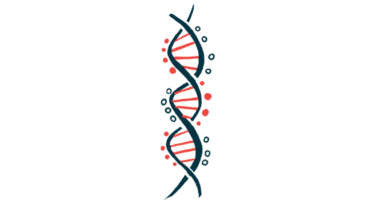Energy Surplus in Overly Active Fibroblasts May Be SSc Therapeutic Target
Researchers identified small molecules that may slow, stop fibrosis in scleroderma

Fibroblasts from the skin of people with systemic sclerosis (SSc) can get more energy from their powerhouses, the mitochondria, than healthy skin fibroblasts, a small study found.
Researchers zeroed in on some of the molecules that may make for the energy surplus and were able to identify small molecules that may slow or stop fibrosis (scarring), which happens when collagen, produced by fibroblasts, builds up in a tissue. This is what causes skin — and sometimes other tissues — to thicken and harden in scleroderma.
Knowing where fibroblasts get most of their energy from “will allow identification of new markers and crucial candidates for the management and treatment of tissue fibrosis,” the researchers wrote.
The study, “Exploring metabolism in scleroderma reveals opportunities for pharmacological intervention for therapy in fibrosis,” was published in Frontiers in Immunology as a collaborative effort between researchers in the U.K., Brazil, and China.
Collagen, a major component of the extracellular matrix that supports and gives structure to cells, is a protein that allows skin to stretch and heal after an injury. In people with scleroderma, fibroblasts become overactive and produce excess collagen.
Glucose (sugar) is a vital source of energy for cells. To get the energy they need, cells can take glucose through two main pathways — glycolysis and oxidative phosphorylation.
Glycolysis allows cells to make energy even when there’s no oxygen. Oxidative phosphorylation, which takes place in the mitochondria, uses oxygen but provides cells with more energy than glycolysis does.
Fibroblasts from skin of SSc patients, healthy people
To find out which of the two is most used by overactive fibroblasts, the researchers obtained fibroblasts from the skin of five people with early-stage diffuse SSc and five healthy people about the same age.
Glycolysis was used to the same extent by fibroblasts from people with SSc and healthy people alike. However, levels of PFKM, a form of phosphofructokinase-1, which is an enzyme that controls how fast or how slow glycolysis must occur in cells, were cut by half in SSc fibroblasts.
The researchers then found enhanced mitochondrial respiration coupled to the production of ATP (the energy “currency” of cells) in SSc fibroblasts. However, the energy surplus came at the expense of spare respiratory capacity, which is the difference between how much ATP can be produced at rest versus its maximal production when cells are under stress and need more energy.
When they’re strained, mitochondria may form a meshwork that could help them deal with and counteract stress. In SSc fibroblasts, but not in healthy fibroblasts, mitochondria were seen to fuse or “blend” together, “which is thought to increase mitochondrial ATP production,” the researchers wrote. This occurred along with a change in the levels of certain molecules that control the mitochondria’s shape.
To test whether some already-known small molecules may inhibit the amount of energy fibroblasts can produce, the researchers used transforming growth factor beta (TGF-beta), a protein in fibrosis that can make the fibroblasts more active.
Treatment with TGF-beta brought about an increase in the levels of markers of fibrosis as well as in the use of both glycolysis and oxidative phosphorylation pathways.
But when the researchers added the small molecules SB431542 or KU55933, the use of both glycolysis and oxidative phosphorylation pathways dropped. SB431542 is a specific inhibitor of three activin receptor-like kinase receptors (ALK5, ALK4, and ALK7) that play a role in the signals sent by TGF-beta. KU55933 is a specific inhibitor of the ataxia-telangiectasia mutated (ATM) kinase.
“These inhibitors are known to suppress matrix production, modulate cell proliferation [growth and division] and regulate differentiation programs,” the researchers wrote.
AZD1208, another small molecule that inhibits so-called PIM kinases, was unable to block the effects of TGF-beta.
“Our data … highlight changes in respiration and dysregulated mitochondrial morphology and function, which can be selectively targeted by small molecule kinase inhibitors,” the researchers said.







